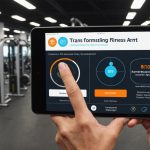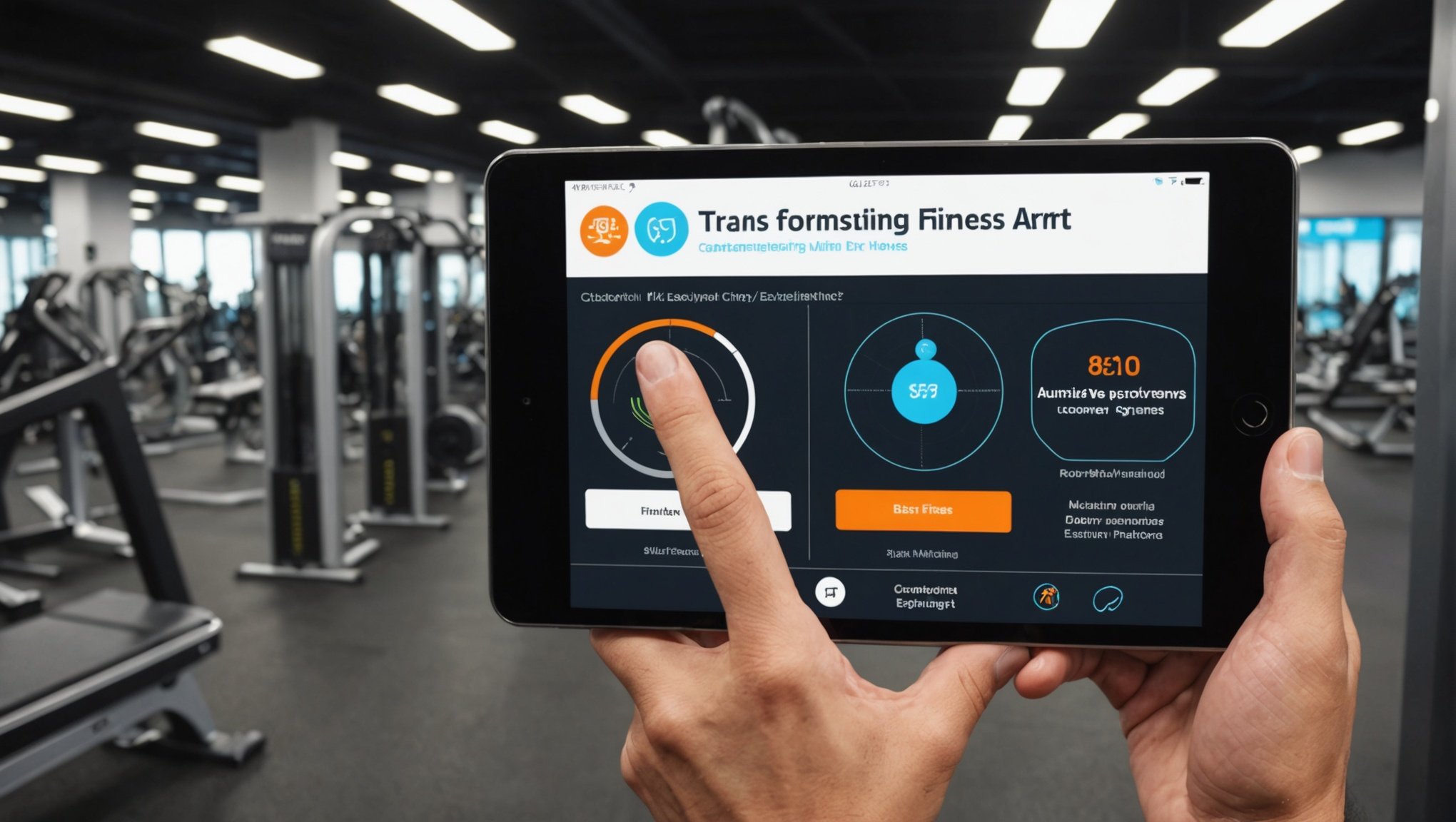Transforming Fitness: Leveraging Augmented Reality to Elevate Customer Experiences in UK Gyms
The fitness industry is undergoing a significant transformation, driven by the integration of cutting-edge technologies such as augmented reality (AR) and virtual reality (VR). In the UK, gyms are increasingly adopting these technologies to enhance the user experience, make workouts more engaging, and provide personalized fitness solutions. Here’s a deep dive into how AR is revolutionizing the fitness landscape in UK gyms.
The Rise of Augmented Reality in Fitness
Augmented reality is not just a buzzword; it’s a game-changer in the fitness industry. Unlike VR, which immerses users in a completely digital environment, AR overlays digital content onto the physical world, enhancing the real-world experience. This technology is being harnessed in various ways to make fitness more accessible, enjoyable, and effective.
Have you seen this : Exploring the Advantages of Sustainable Packaging for Food Producers in the UK
Enhancing Traditional Workouts
AR can transform traditional gym workouts by adding an interactive and immersive layer. For instance, AR can be used to provide real-time instructions and feedback during exercises. Apps like those developed by FitXR Ltd. use AR to offer interactive workout instructions, allowing users to see digital overlays that guide them through their routines. This not only helps in maintaining proper form but also makes the workout more engaging and fun.
Personalized Training Plans
One of the key benefits of AR in fitness is its ability to create personalized training plans. Using data analytics and machine learning, AR apps can tailor workouts to individual fitness goals and preferences. For example, generative AI coaches integrated into fitness apps can provide real-time feedback on form, technique, and intensity, helping users optimize their performance and reduce the risk of injuries.
Topic to read : Top Strategies for UK Businesses to Safeguard Against Cybersecurity Threats
How AR is Being Implemented in UK Gyms
UK gyms are at the forefront of adopting AR technology to enhance the user experience. Here are some ways AR is being implemented:
Virtual Fitness Classes
AR enables gyms to offer virtual fitness classes that users can participate in from the comfort of their own homes or within the gym itself. These classes can be led by virtual instructors who provide real-time feedback and guidance. Companies like Xponential Fitness have launched virtual and mixed-reality apps that allow users to participate in boutique fitness classes remotely.
Interactive Workouts
AR can make workouts more engaging by introducing gamification elements. For example, users can participate in AR-based fitness challenges where they have to complete certain tasks or reach specific targets. This gamification aspect not only makes the workout more enjoyable but also increases user motivation and adherence to their fitness goals.
Real-Time Data Visualization
AR technology can also provide real-time data visualization, allowing users to see their health stats, such as heart rate, distance traveled, and calories burned, in real time. Smart glasses like Solos Smartglasses can display this data directly on the user’s glasses, providing a seamless and integrated experience.
Benefits of AR in Fitness
The integration of AR in fitness offers several benefits that are transforming the industry.
Increased Engagement and Motivation
AR makes workouts more engaging and enjoyable, which can significantly increase user motivation. A study on the impact of VR immersion on exercise performance found that participants reported higher levels of enjoyment and engagement when using VR compared to traditional workouts. This increased engagement can lead to better adherence to fitness plans and long-term health benefits.
Personalized Feedback and Coaching
AR provides personalized feedback and coaching, which is crucial for effective and safe workouts. Generative AI coaches can analyze user data and provide real-time feedback on form, technique, and intensity, helping users optimize their performance and reduce the risk of injuries.
Accessibility and Convenience
AR enhances the accessibility and convenience of fitness workouts. Users can participate in virtual classes, access personalized training plans, and receive real-time feedback from anywhere, whether at home, in the gym, or outdoors. This flexibility is particularly appealing to millennials who prefer remote and flexible workout options.
Challenges and Future Directions
While AR is revolutionizing the fitness industry, there are also some challenges and future directions to consider.
Privacy Concerns
One of the significant challenges is addressing privacy concerns. As AR apps collect and analyze user data, ensuring the privacy and security of this data is crucial. Gyms and app developers must implement robust data protection measures to build trust with their users.
Integration with Wearable Technology
The future of AR in fitness lies in its integration with wearable technology. Wearable devices can provide continuous data on user health and fitness, which can be used by AR apps to offer more personalized and effective workouts. For example, Technogym’s smart bike integrates with various fitness apps like Zwift, Strava, and TrainingPeaks, allowing users to sync their data across different platforms.
Practical Insights and Actionable Advice for Gym Owners
For gym owners looking to leverage AR to elevate customer experiences, here are some practical insights and actionable advice:
Invest in AR Technology
Investing in AR technology can be a game-changer for gyms. It allows gyms to offer unique and engaging workout experiences that differentiate them from competitors.
Develop User-Friendly Apps
Developing user-friendly AR apps is crucial. These apps should be easy to use, provide clear instructions, and offer real-time feedback to enhance the user experience.
Integrate with Wearable Technology
Integrating AR with wearable technology can provide a more comprehensive and personalized fitness experience. This integration allows for continuous data collection and analysis, enabling more effective workout plans.
Focus on Data Analytics
Focusing on data analytics is essential for creating personalized workout plans. AR apps should be able to analyze user data and provide insights that help users achieve their fitness goals.
Detailed Bullet Point List: How AR Enhances Fitness Workouts
Here’s a detailed list of how AR enhances fitness workouts:
- Interactive Instructions: AR provides real-time instructions and feedback during exercises, helping users maintain proper form and technique.
- Personalized Training Plans: AR apps use data analytics and machine learning to create personalized training plans tailored to individual fitness goals and preferences.
- Gamification: AR introduces gamification elements, making workouts more engaging and enjoyable.
- Real-Time Data Visualization: AR technology provides real-time data visualization, allowing users to see their health stats such as heart rate, distance traveled, and calories burned.
- Virtual Fitness Classes: AR enables gyms to offer virtual fitness classes led by virtual instructors who provide real-time feedback and guidance.
- Accessibility and Convenience: AR enhances the accessibility and convenience of fitness workouts, allowing users to participate in virtual classes and access personalized training plans from anywhere.
- Increased Engagement and Motivation: AR makes workouts more engaging and enjoyable, increasing user motivation and adherence to fitness plans.
- Integration with Wearable Technology: AR integrates with wearable devices to provide continuous data on user health and fitness, enabling more personalized and effective workouts.
Comprehensive Table: Comparison of AR and VR in Fitness
Here is a comprehensive table comparing AR and VR in the fitness industry:
| Feature | Augmented Reality (AR) | Virtual Reality (VR) |
|---|---|---|
| Environment | Overlays digital content onto the physical world | Immerses users in a completely digital environment |
| User Experience | Enhances real-world experience with interactive elements | Creates a new, immersive environment separate from reality |
| Workout Type | Suitable for traditional gym workouts with real-time feedback | Ideal for immersive, mission-based workouts in virtual environments |
| Data Visualization | Provides real-time data visualization on health stats | Offers immersive data visualization within the virtual environment |
| Accessibility | Allows for workouts at home, in the gym, or outdoors | Typically requires a dedicated VR setup |
| Personalization | Uses data analytics and machine learning for personalized training plans | Offers personalized coaching and feedback within the virtual environment |
| Gamification | Introduces gamification elements to make workouts more engaging | Incorporates gamification through virtual challenges and missions |
| Integration | Integrates with wearable technology for continuous data collection | Can integrate with wearable technology but often requires specific VR hardware |
Quotes from Industry Experts
Here are some quotes from industry experts that highlight the impact of AR in the fitness industry:
- “The integration of AR and VR technologies in online fitness courses is revolutionizing the global fitness industry. These technologies enable personalized and interactive online fitness courses, increasing motivation, enjoyment, and effectiveness.” – Technavio Report
- “AR makes workouts more engaging and enjoyable, which can significantly increase user motivation. Participants reported higher levels of enjoyment and engagement when using VR compared to traditional workouts.” – Mouatt et al.
- “Generative AI and large language models have entered the field to address the gap in personalized coaching and guidance. These models can combine unique biometric data, vetted knowledge base, fitness goals, and other data points to deliver highly personalized, conversational responses to users’ fitness and wellness questions in real time.” – Orangesoft Blog
The integration of augmented reality in the fitness industry is a significant step forward in enhancing customer experiences in UK gyms. By providing interactive instructions, personalized training plans, and real-time data visualization, AR is making workouts more engaging, enjoyable, and effective. As the technology continues to evolve, it promises to bring even more innovative solutions to the fitness landscape, making health and fitness more accessible and convenient for everyone. For gym owners, investing in AR technology and developing user-friendly apps that integrate with wearable technology can be a key differentiator in a competitive market. As the fitness industry continues to embrace the digital age, AR is set to play a central role in shaping the future of fitness.











